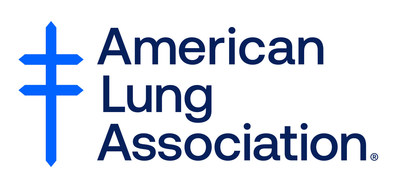American Lung Association launches effort to raise awareness for the risks and symptoms of occupational COPD
CHICAGO, April 9, 2024 /PRNewswire/ — Chronic obstructive pulmonary disease (COPD) impacts 11.7 million people living in the U.S. While smoking is a significant risk factor for the disease, long-term exposure to dust, chemicals, fumes and vapors from the workplace may also lead to COPD. To help people identify workplace risk factors and encourage them to speak with their healthcare provider if they are experiencing symptoms, the American Lung Association is launching a campaign to raise awareness for occupational COPD.
“Occupational COPD can have a significant toll on a person’s work life and overall quality of life. And it tends to come on slowly and get worse over time,” said Harold Wimmer, President and CEO of the American Lung Association. “With occupational COPD, a person may begin taking the elevator instead of the stairs because of shortness of breath, develop a lingering cough after sweeping sawdust or must regularly call in sick due to respiratory infections. This new project is critical to educating people about which careers can increase their risk for COPD and how to identify symptoms as early as possible to be discussed with their healthcare provider.”
COPD, which includes chronic bronchitis and emphysema, is a long-term lung disease that makes it hard to breathe. While tobacco use is the leading cause of COPD, other risk factors include exposure to secondhand smoke, indoor and outdoor air pollution, a history of childhood lung infections, and alpha-1 antitrypsin deficiency. A person may have multiple risk factors for COPD.
“I did not realize that working in a hair and nail salon doing nails would put me at risk for lung disease, COPD,” said Mary Cohen, who worked at a salon for years and has been diagnosed with COPD.
Many workplaces may expose workers to risk factors for COPD, but the leading job types that increase risk for chronic lung disease include agriculture, mining and manufacturing. While hazard control measures can reduce or eliminate irritants, it is important for workers to be aware of common workplace exposures which include:
- Secondhand smoke
- Mineral dusts like silica, coal and asbestos
- Organic dusts like cotton, wood and grains
- Metal or welding fumes like cadmium
- Diesel or exhaust fumes
- Asphalt, tar fumes, or vapor in roads or roofing
- Smoke from fires
Symptoms of COPD include shortness of breath, a cough that may bring up sputum (mucus or phlegm), wheezing, tiredness or fatigue, or repeated lung infections like bronchitis or pneumonia. People often think their symptoms may be a sign of aging, or because they smoke or used to smoke, or because they have gained weight or are out of shape. If a person has been exposed to risk factors for occupational COPD or has symptoms, the Lung Association recommends that they speak to their healthcare provider. A breathing test, called spirometry, can indicate if the lungs are not functioning properly. Early treatment of a chronic lung disease, including reducing the exposure, can help lead to better health outcomes.
This campaign was created with support by the Centers for Disease Control. Learn more at Lung.org/workplace-COPD.
About the American Lung Association
The American Lung Association is the leading organization working to save lives by improving lung health and preventing lung disease through education, advocacy and research. The work of the American Lung Association is focused on four strategic imperatives: to defeat lung cancer; to champion clean air for all; to improve the quality of life for those with lung disease and their families; and to create a tobacco-free future. For more information about the American Lung Association, which has a 4-star rating from Charity Navigator and is a Platinum-Level GuideStar Member, call 1-800-LUNGUSA (1-800-586-4872) or visit: Lung.org. To support the work of the American Lung Association, find a local event at Lung.org/events.
American Lung Association • 55 W. Wacker Drive, Suite 1150 • Chicago, IL 60601
1331 Pennsylvania Ave. NW, Ste. 1425 North • Washington, D.C. 20004
1-800-LUNGUSA (1-800-586-4872) Lung.org
CONTACT: Jill Dale | American Lung Association
P: 312-940-7001 M:720-438-8289E: Jill.Dale@Lung.org
![]() View original content to download multimedia:https://www.prnewswire.com/news-releases/new-campaign-highlights-how-certain-jobs-can-increase-a-persons-risk-for-lung-disease-302111087.html
View original content to download multimedia:https://www.prnewswire.com/news-releases/new-campaign-highlights-how-certain-jobs-can-increase-a-persons-risk-for-lung-disease-302111087.html
SOURCE American Lung Association

Featured image: © AntonMatyukha






